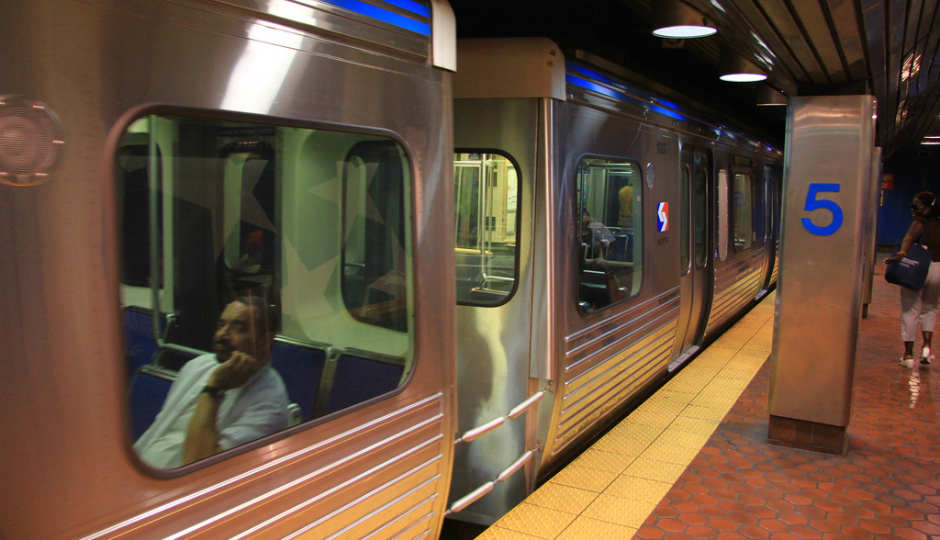How Those SEPTA Stop Announcements Work — and What to Do When They Don’t

The signs outside say 5th Street. But what does the announcement say? (Photo by Flickr user Michael Hicks, used under CC-BY-SA-2.0)
One of my colleagues asked one recent morning, “Why is it that the stop announcements on SEPTA are off so much of the time?”
This didn’t come as a total shock to me, for I’ve been on trains, mostly on the Market-Frankford Line, where the automated stop announcements were way out of sync with the views from the train windows. But what did surprise me was how often he said he experienced this phenomenon: “Frequently,” he said, mentioning the Route 10 trolley and the El in particular.
So that makes at least two of us who recall out-of-sync stop announcements on the El. And there’s been many a late night when the Broad Street Line train I took announced every station four times: twice on the way and twice when the train got there.
It was time to get to the bottom of this problem.
So I put the question to SEPTA: Just how do those automated stop announcements work?
Before getting into the explanation, let the record show that SEPTA spokesperson Manny Smith said the people in the Operations and Customer Service departments he contacted for responses to my query were surprised to hear that anyone heard out-of-sync stop announcements often.
According to Smith, SEPTA’s customer service agents have received a total of 12 complaints about Market-Frankford Line announcements, 11 complaints about bus announcements, and only two about Broad Street Line announcements since 2014. Moreover, he said, most of the complaints about bus announcements concerned their volume — either they were too loud or too soft. In every case where a customer complained about announcements, the vehicle in question was taken out of service, tested and repaired.
It could simply be that riders don’t consider out-of-sync announcements complaint-worthy. I sure didn’t call anyone about that Market-Frankford train that was announcing the stops in eastbound order as our train sped westbound. But in case you did, or if you’re just curious, here’s how the automated stop announcements work on each type of vehicle:
On the buses, and on the trolleys once they come to the surface, a GPS-activated computerized program triggers cross street announcements at specified locations along the route. The announcements usually occur at transfer stops, major cross streets or major facilities such as schools or hospitals along a line. As the bus passes a specific GPS location, the computer triggers the announcement. Each bus with this system is inspected before it leaves the depot every day to make sure the system is in working order.
On the Broad Street Line, operators are supposed to enter their train’s destination and direction of travel into a computer at the start of every run. The computer then queues a set of announcements to be played before and when the train arrives at a station. The operator must push a button to play each announcement in the queue. If the stop announcements go out of order, the operator may skip announcements until they are back in sync with the train’s location.
On the Market-Frankford Line, announcements are triggered automatically by an on-board computer that measures the distance traveled between stations and triggers announcements as the train approaches each station. The operator can reset the system if the announcements go out of whack, but as the MFL’s half-cabs have no speakers inside to repeat the announcements, unless a rider knocks on the cab door to notify the operator, nothing’s likely to happen.
With all of these systems, the main point of failure is at the start of the trip, when the operator or driver must input the trip number or route and destination. Get that initial input wrong, as the operator on that “eastbound” MFL train evidently did, and everyone will be confused from start to finish — assuming, that is, they’re paying attention to the announcements.
Which is where you can come in. If you hear announcements that are out of sync, let the operator know if you can, and whether or not you can, let SEPTA Customer Service know when and where you encountered the problem. Enough complaints and maybe they’ll make sure the operators are vigilant.
Follow Sandy Smith on Twitter.


